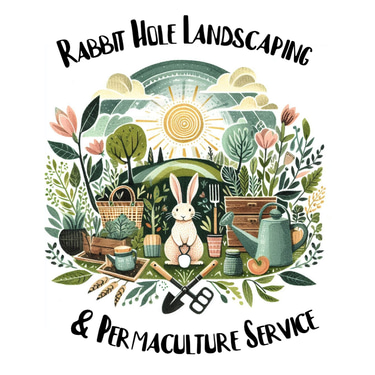10 Ways to Live More Sustainably and Efficiently
10 ways you can live more sustainably and efficiently by investing in food forests, medical herb gardens, vegetable gardens, and regenerative permaculture installations.
Nick Bradfield
4/4/20243 min read


Introduction
Living sustainably and efficiently is not only beneficial for the environment but also for our own well-being. By investing in food forests, medical herb gardens, vegetable gardens, and regenerative permaculture installations, we can make a positive impact on our planet while enjoying the many benefits of these green spaces. In this blog post, we will explore 10 ways you can live more sustainably and efficiently by investing in these eco-friendly projects.
1. Food Forests
One of the most sustainable ways to grow food is by creating a food forest. Food forests are designed to mimic natural ecosystems, with a diverse range of plants and trees that provide food, shelter, and habitat for wildlife. By investing in a food forest, you can grow a variety of fruits, nuts, and vegetables while promoting biodiversity and reducing the need for chemical inputs.
2. Medical Herb Gardens
Investing in a medical herb garden is not only a sustainable way to grow your own medicinal plants but also a way to reduce your reliance on pharmaceuticals. Growing herbs such as chamomile, lavender, and peppermint can provide natural remedies for common ailments like headaches, insomnia, and digestive issues. Additionally, these gardens attract beneficial insects and pollinators, contributing to a healthier ecosystem.
3. Vegetable Gardens
Growing your own vegetables is a rewarding and sustainable way to ensure a fresh and healthy food supply. By investing in a vegetable garden, you can reduce your carbon footprint by eliminating the need for transportation and packaging associated with store-bought produce. Additionally, growing your own vegetables allows you to control the use of pesticides and fertilizers, promoting a healthier and more sustainable food system.
4. Regenerative Permaculture Installations
Regenerative permaculture installations are designed to restore and regenerate degraded landscapes. By investing in these installations, you can transform barren or damaged land into thriving ecosystems that provide food, shelter, and habitat for wildlife. These installations focus on creating a self-sustaining system that minimizes waste and maximizes resource efficiency.
5. Rainwater Harvesting
Rainwater harvesting is an essential practice for sustainable living. By capturing and storing rainwater, you can reduce your reliance on municipal water supplies and decrease your water bill. Investing in rainwater harvesting systems, such as rain barrels or cisterns, allows you to collect and use rainwater for watering your gardens, flushing toilets, and other non-potable uses.
6. Composting
Composting is a simple and effective way to reduce waste and create nutrient-rich soil for your gardens. By investing in a composting system, you can divert organic waste from landfills and reduce methane emissions. Compost can be used as a natural fertilizer, improving soil health and promoting plant growth without the need for synthetic chemicals.
7. Beekeeping
Beekeeping is not only a rewarding hobby but also a crucial practice for supporting pollinators and ensuring food security. By investing in beekeeping, you can contribute to the health and well-being of honeybees and other pollinators. Bees play a vital role in pollinating crops, and their decline poses a significant threat to global food production. By keeping bees, you can help maintain a healthy ecosystem and enjoy the benefits of fresh honey.
8. Renewable Energy
Investing in renewable energy sources such as solar panels or wind turbines is a sustainable way to power your home and reduce your carbon footprint. By generating your own clean energy, you can decrease your reliance on fossil fuels and contribute to the fight against climate change. Additionally, renewable energy systems can save you money in the long run by reducing your energy bills.
9. Natural Pest Control
Instead of relying on chemical pesticides, investing in natural pest control methods can help maintain a healthy and balanced ecosystem in your gardens. Introducing beneficial insects, such as ladybugs or praying mantises, can help control pests naturally. Additionally, companion planting, using plants that repel pests or attract beneficial insects, can reduce the need for chemical interventions.
10. Education and Community Engagement
Investing in education and community engagement is crucial for creating a sustainable future. By sharing your knowledge and experiences with others, you can inspire and empower your community to adopt sustainable practices. Hosting workshops, organizing community gardens, or participating in local environmental initiatives are great ways to promote sustainable living and create a positive impact.
Conclusion
By investing in food forests, medical herb gardens, vegetable gardens, and regenerative permaculture installations, we can live more sustainably and efficiently. These eco-friendly projects not only provide us with fresh and healthy food but also promote biodiversity, conserve water, reduce waste, and support a healthier ecosystem. Whether you have a small backyard or a larger piece of land, there are plenty of options to get started on your sustainable journey. So why not take the first step and invest in a greener future?
